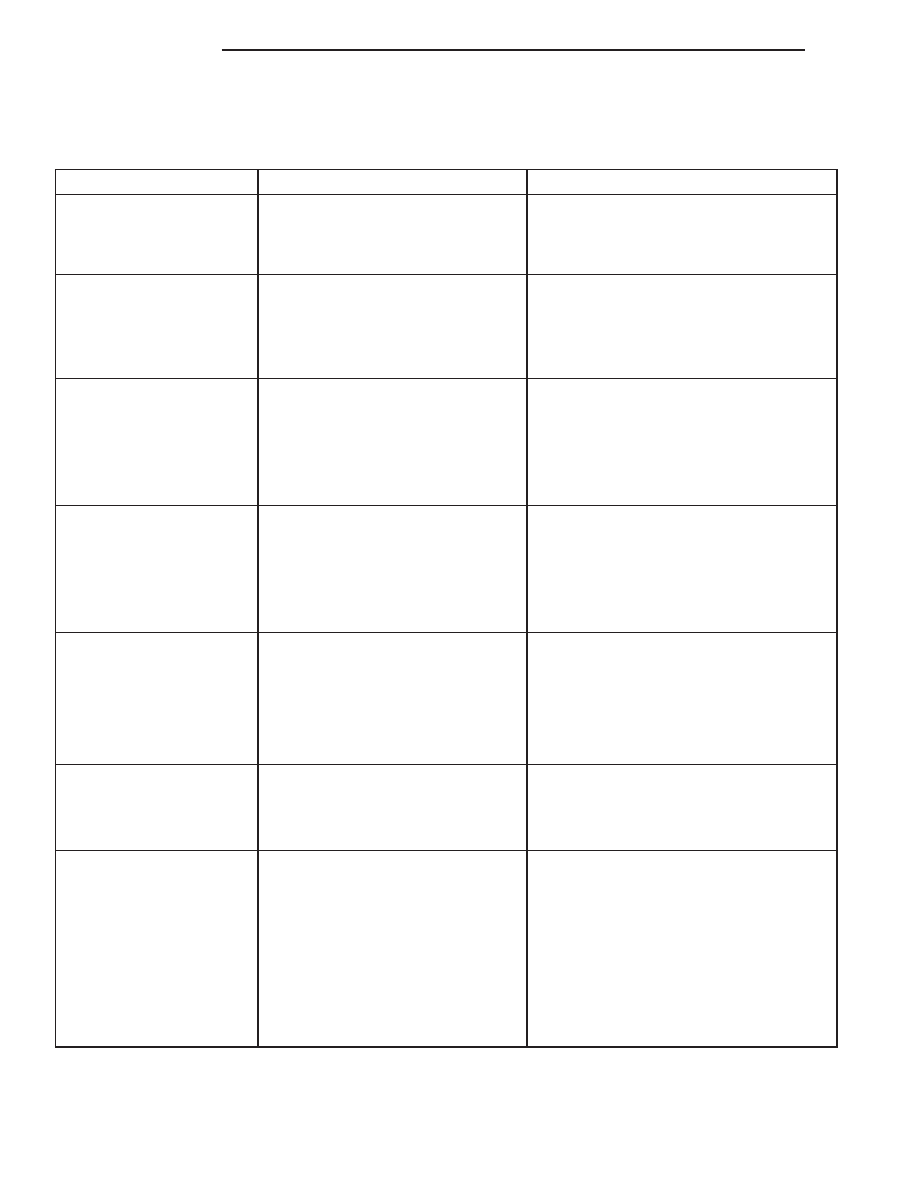Jeep Liberty KJ. Manual - part 13

SUSPENSION
DIAGNOSIS AND TESTING - SUSPENSION AND STEERING SYSTEM
CONDITION
POSSIBLE CAUSES
CORRECTION
FRONT END NOISE
1. Loose or worn wheel bearings.
1. Replace wheel bearings.
2. Loose or worn steering or
suspension components.
2. Tighten or replace components as
necessary.
EXCESSIVE PLAY IN
STEERING
1. Loose or worn wheel bearings.
1. Replace wheel bearings.
2. Loose or worn steering or
suspension components.
2. Tighten or replace components as
necessary.
3. Loose or worn steering gear.
3. Adjust or replace steering gear.
FRONT WHEELS SHIMMY
1. Loose or worn wheel bearings.
1. Replace wheel bearings.
2. Loose or worn steering or
suspension components.
2. Tighten or replace components as
necessary.
3. Tires worn or out of balance.
3. Replace or balance tires.
4. Alignment.
4. Align vehicle to specifications.
VEHICLE INSTABILITY
1. Loose or worn wheel bearings.
1. Replace wheel bearings.
2. Loose or worn steering or
suspension components.
2. Tighten or replace components as
necessary.
3. Tire pressure.
3. Adjust tire pressure.
4. Alignment.
4. Align vehicle to specifications.
EXCESSIVE STEERING
EFFORT
1. Loose or worn steering gear.
1. Adjust or replace steering gear.
2. Power steering fluid low.
2. Add fluid and repair leak.
3. Column coupler binding.
3. Replace coupler.
4. Tire pressure.
4. Adjust tire pressure.
5. Alignment.
5. Align vehicle to specifications.
VEHICLE PULLS TO ONE
SIDE DURING BRAKING
1. Uneven tire pressure.
1. Adjust tire pressure.
2. Worn brake components.
2. Repair brakes as necessary.
3. Air in brake line.
3. Repair as necessary.
VEHICLE LEADS OR
DRIFTS FROM STRAIGHT
AHEAD DIRECTION ON
UNCROWNED ROAD
1. Radial tire lead.
1. Cross front tires.
2. Brakes dragging.
2. Repair brake as necessary.
3. Weak or broken spring.
3. Replace spring.
4. Uneven tire pressure.
4. Adjust tire pressure.
5. Wheel Alignment.
5. Align vehicle.
6. Loose or worn steering or
suspension components.
6. Repair as necessary.
7. Cross caster out of spec.
7. Align vehicle.
2 - 2
SUSPENSION
KJ